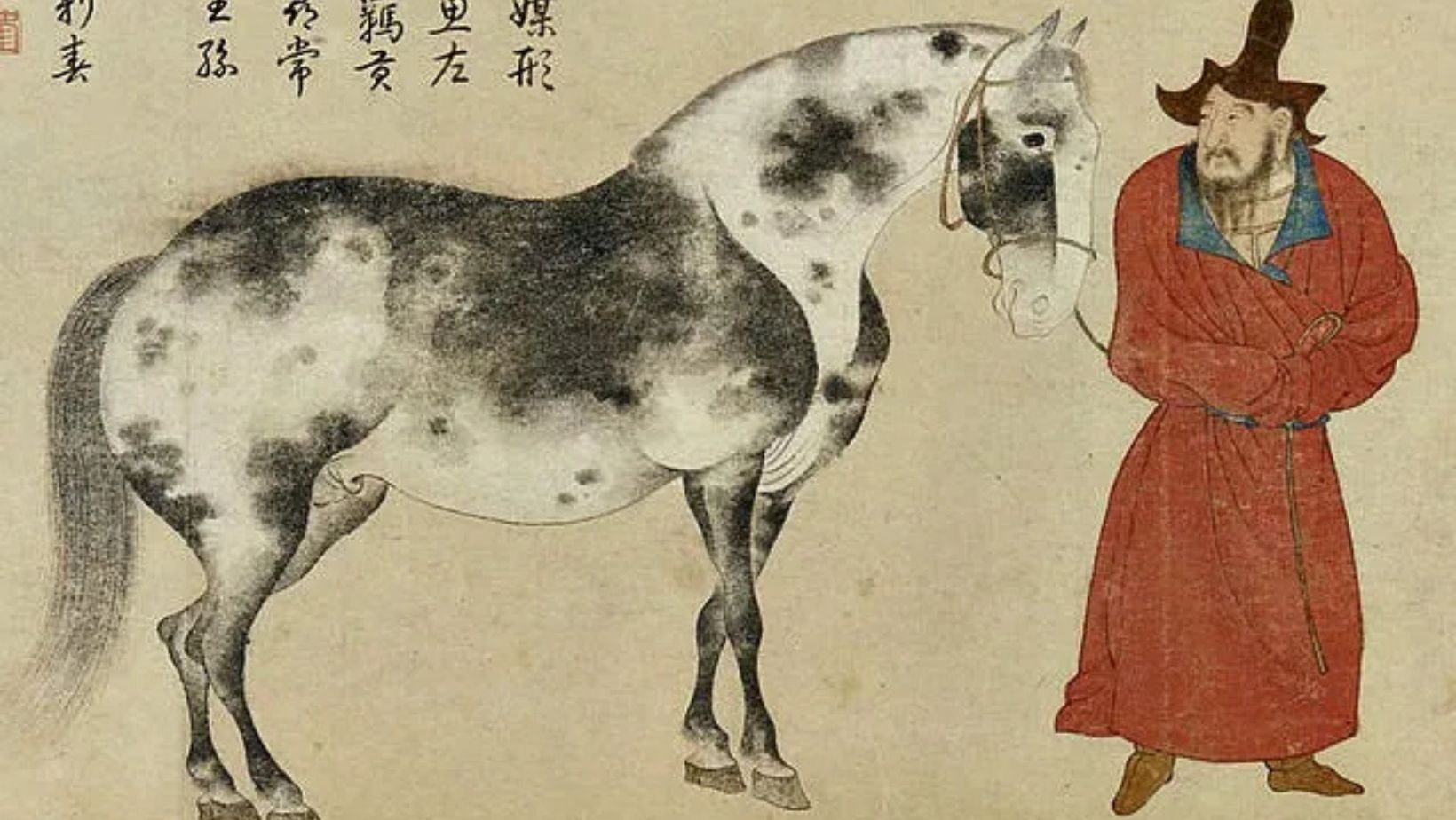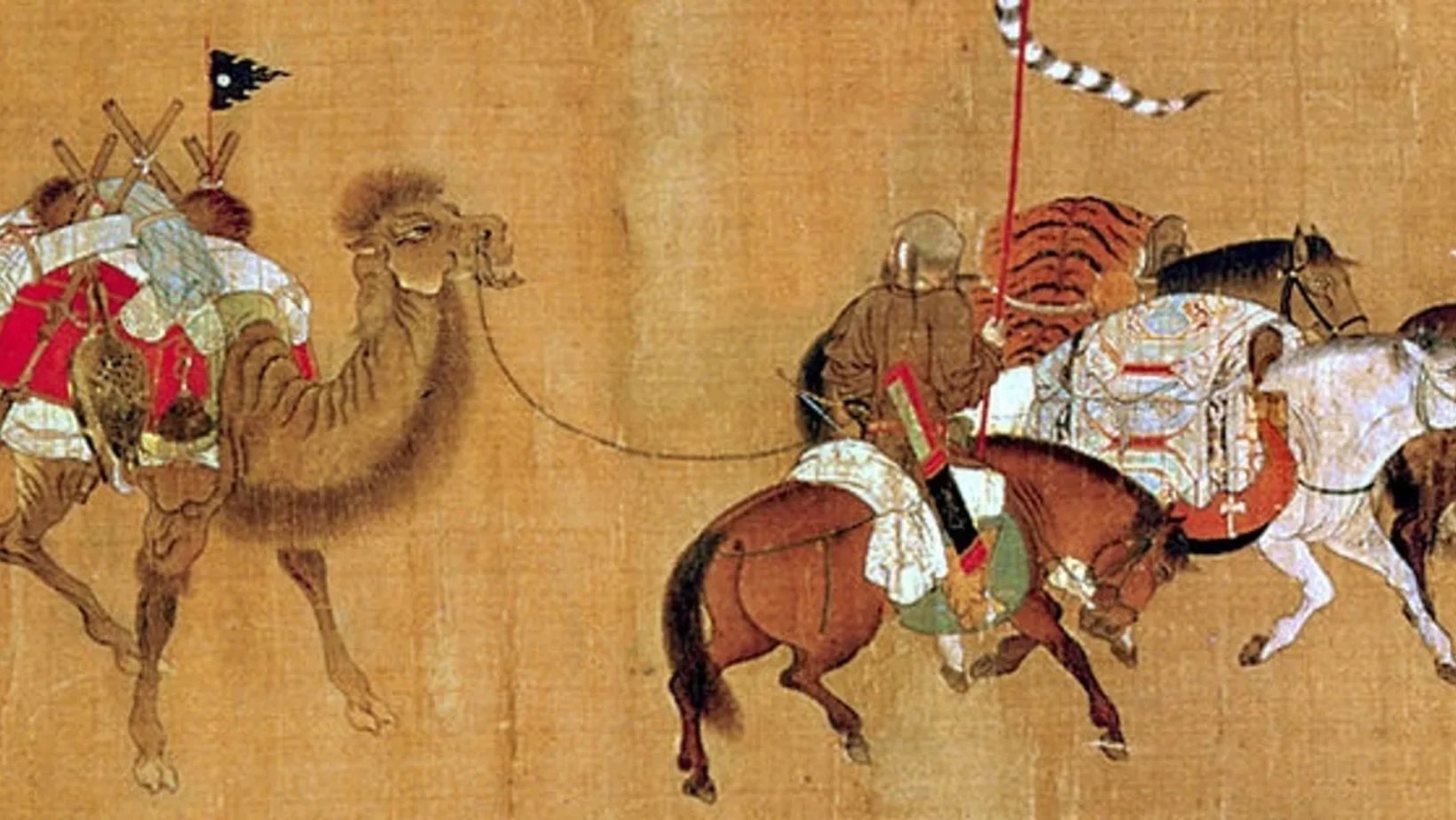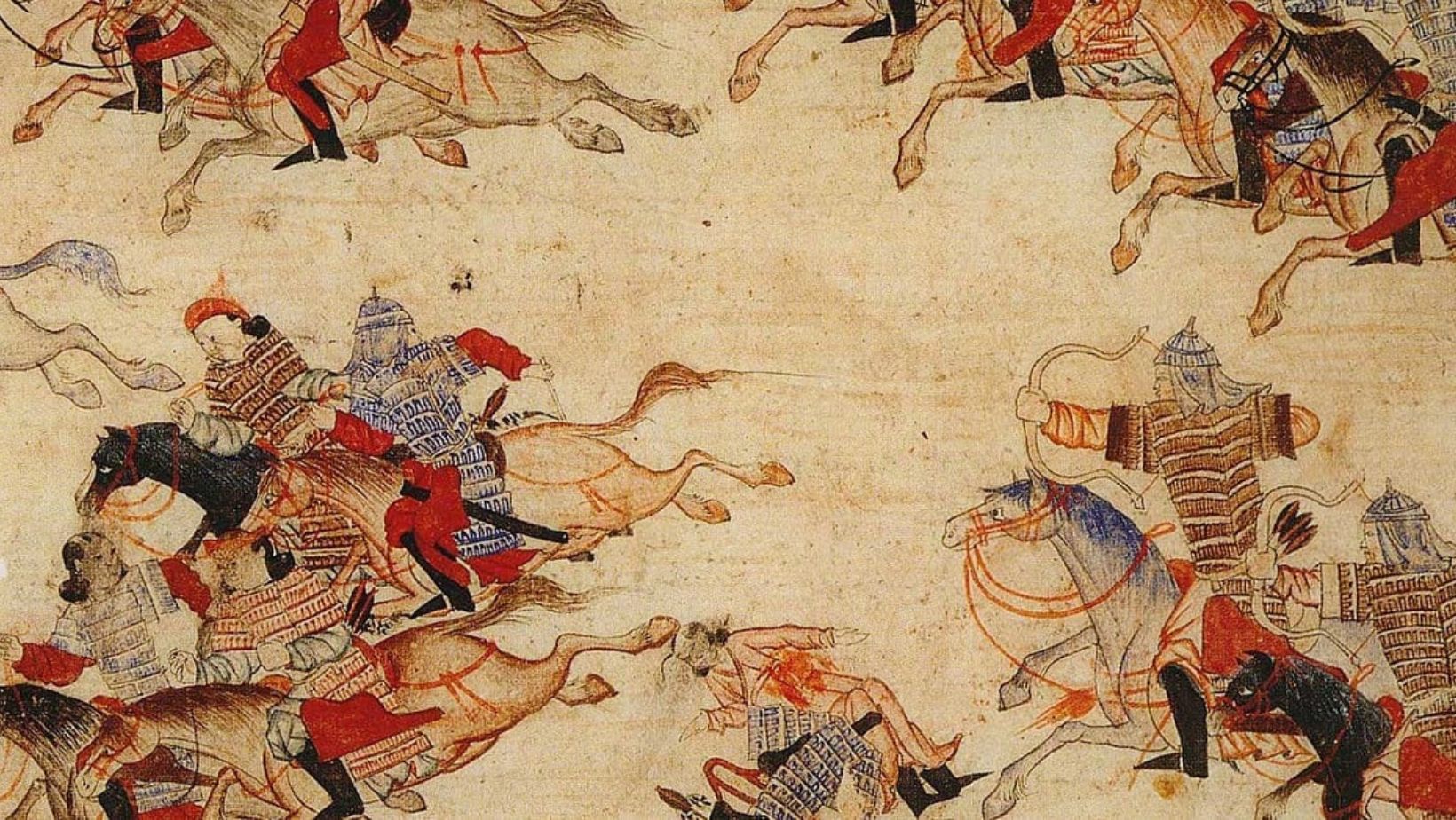Pax Mongolica, or “Mongolian Peace,” refers to the period of stability and prosperity under the Mongol Empire during the 13th and 14th centuries. This era was marked by extensive trade and cultural exchange across vast territories. The Mongols, known for their military prowess, also understood the value of commerce. They established safe trade routes, connecting East and West like never before. This not only boosted the economy but also facilitated the sharing of ideas, technologies, and cultures. In this blog, we will explore how Pax Mongolica reshaped trade and influenced the world in ways still felt today.
Understanding Pax Mongolica

Pax Mongolica, meaning “Mongolian Peace,” refers to the period of relative stability and order established by the Mongol Empire in the 13th and 14th centuries. This era lasted from around 1240 to the mid-14th century. It was characterized by the Mongols’ control over a vast territory stretching from Eastern Europe to Asia.
During this time, the Mongols promoted trade and cultural exchange across their empire. They created a network of trade routes, including parts of the Silk Road, which facilitated commerce between different regions. The Mongols ensured the safety of merchants and travelers, reducing the risks associated with long-distance trade.
This environment fostered economic growth and the spread of ideas, technologies, and cultures. The influence of Pax Mongolica extended beyond trade, impacting areas such as diplomacy, religion, and science. Overall, it marked a significant chapter in world history, demonstrating how a powerful empire can facilitate connections among diverse cultures.
The Expansion of the Mongol Empire
The Mongol Empire expanded rapidly in the 13th century under the leadership of Genghis Khan. He united various nomadic tribes in Mongolia and launched campaigns of conquest across Asia and Europe. The Mongol forces were highly organized and utilized advanced military strategies, including superior mobility and psychological warfare. Their conquests began in Central Asia, then spread to China, the Middle East, and parts of Eastern Europe.
Key regions included in the empire were the entirety of China, known as the Yuan Dynasty, and the vast steppes of Central Asia. The Mongols also conquered the Khwarezmian Empire, which covered parts of present-day Iran, Uzbekistan, and Turkmenistan. Additionally, they expanded into the Russian territories, reaching as far west as Poland and Hungary.
By the late 13th century, the Mongol Empire had become the largest contiguous empire in history. This vast territory enabled the Mongols to control crucial trade routes, facilitating the exchange of goods, cultures, and ideas across regions. The expansion of the Mongol Empire laid the foundation for Pax Mongolica, fostering an era of increased trade and stability.
The Silk Road and Its Significance
The Silk Road was a network of trade routes connecting the East and West, crucial for commerce and cultural exchange. Before Mongol control, the Silk Road faced numerous challenges, including banditry and political fragmentation. These issues made trade risky and less efficient. However, with the rise of the Mongol Empire, the Silk Road experienced a significant transformation.
Mongol leaders implemented policies that promoted trade and secured the routes. They established a system of relay stations, known as yam, which provided rest and supplies for merchants. The Mongols also enforced laws protecting traders from theft and violence, increasing safety along the roads. Additionally, they encouraged cultural exchanges, allowing diverse ideas and goods to flow freely.
Under Mongol rule, the Silk Road flourished, linking major cities like Samarkand and Bukhara. Goods such as silk, spices, and precious metals moved more freely than ever before. This period of stability, known as Pax Mongolica, allowed for unprecedented economic growth and cultural interactions. The Mongol influence ultimately reshaped the Silk Road, ensuring its legacy as a vital artery of global trade.
Trade Innovations During Pax Mongolica

Pax Mongolica brought significant trade innovations that transformed commerce across the Mongol Empire. One of the key developments was the introduction of a relay trade system. This system allowed merchants to travel shorter distances while relying on a network of traders to transport goods between points. It increased efficiency and expanded trade routes across vast areas.
Another important innovation was the Yam system, which provided secure travel passes for merchants. These passes allowed traders to move safely across different regions of the empire. The Mongols established waystations, or yam, that served as rest stops for travelers and their animals. These stations offered food, shelter, and fresh mounts, ensuring quick and safe passage.
The combination of the relay trade system and the Yam system encouraged trade and boosted economic activity. Merchants were more willing to travel and trade across long distances, knowing they had protection and support. This environment fostered a vibrant marketplace, where goods from different cultures exchanged freely. Overall, these innovations during Pax Mongolica significantly enhanced the flow of trade and ideas across the empire.
Cultural Exchanges: More Than Just Goods
Pax Mongolica facilitated extensive cultural exchanges across the Mongol Empire. It was not just about trading goods; ideas, technology, and cultural practices also spread rapidly. This exchange significantly influenced art, science, and religion in various regions.
Artistic styles blended as artists from different cultures interacted. For example, Persian and Chinese art influences merged, leading to new styles and techniques. Additionally, the Mongols promoted the use of paper and printing technologies, which improved communication and record-keeping.
In science, knowledge in medicine, astronomy, and mathematics traveled along trade routes. Scholars shared innovations and discoveries, leading to advancements in various fields. Furthermore, religious tolerance allowed for the coexistence of different beliefs, fostering dialogue between Buddhism, Islam, and Christianity.
This rich tapestry of cultural exchanges reshaped societies within the empire and beyond. The shared knowledge and experiences contributed to a greater understanding of the world. As a result, Pax Mongolica left a lasting impact that shaped the development of civilizations across Eurasia.
Economic Impacts of Mongol Trade Policies
Mongol trade policies significantly boosted the empire’s economy. By promoting trade across vast territories, the Mongols enhanced the flow of goods, such as silk, spices, and precious metals. This influx of resources enriched the empire and supported its military and administrative needs.
As trade flourished, a new merchant class emerged. These merchants became vital players in the economy, establishing trade networks that spanned continents. Their ability to navigate the complexities of international trade increased their influence and wealth.
The Mongols also implemented policies that ensured safe passage for traders. The Yam system provided secure travel routes, reducing risks from banditry and conflict. This encouraged merchants to traverse the Silk Road and other trade routes, further integrating the empire’s economy with those of neighboring regions.
Moreover, trade policies facilitated the exchange of ideas and technologies. As merchants moved, they brought innovations that improved agricultural and manufacturing practices. Overall, the economic impacts of Mongol trade policies were profound, shaping the prosperity of the empire and laying the groundwork for future economic systems.
Mongol Trade and the European Connection
The Mongol Empire played a crucial role in connecting the East and West. Through their control of the Silk Road, they facilitated trade between Europe and Asia. Goods such as silk, spices, and precious metals moved along these routes, enriching both regions.
This interaction sparked European interest in Asian markets. As traders brought back exotic products, European nations began exploring new trade routes. The desire for direct access to Asian goods led to significant explorations, such as those undertaken by Marco Polo.
Mongol stability also encouraged travel and communication across vast distances. Europeans were introduced to new ideas, technologies, and cultures through these exchanges. This sharing of knowledge helped fuel the Renaissance in Europe, as ancient texts and innovations flowed westward.
Additionally, the Mongols’ diplomatic efforts established relationships with European powers. They sought alliances and trade agreements, fostering a climate of cooperation. Overall, Mongol trade created lasting connections that would shape European exploration and trade in the centuries to come.
Challenges and Decline of Pax Mongolica
Several factors contributed to the decline of Pax Mongolica and the Mongol Empire’s trade dominance. Internal strife weakened the empire, leading to fragmentation and civil wars among various factions. As regional powers emerged, they disrupted the unity that had facilitated trade.
Additionally, the rise of new trade routes diminished the significance of the traditional Silk Road. European nations began seeking alternative paths to Asia, reducing reliance on Mongol-controlled routes. This shift impacted trade revenues for the Mongol Empire.
The Black Death further devastated trade networks during the 14th century. The plague swept through Asia and Europe, causing significant population declines. As people died, trade slowed, and economic instability ensued.
These challenges ultimately led to the weakening of Mongol influence in global trade. The vast network established during Pax Mongolica began to unravel, signaling the end of an era. The empire’s decline reshaped the dynamics of international trade and paved the way for new powers to emerge.
Legacy of Pax Mongolica in Modern Trade

The legacy of Pax Mongolica continues to influence contemporary trade routes and globalization today. The Mongol Empire established a vast network that facilitated the exchange of goods, ideas, and culture across Asia and Europe. This model of interconnectedness laid the groundwork for modern global trade systems.
Contemporary trade routes often follow paths similar to those established during the Mongol era. For instance, initiatives like China’s Belt and Road Initiative aim to recreate historical trade connections, fostering economic ties between countries. Such efforts highlight the enduring significance of cross-cultural trade in promoting economic growth.
Additionally, the Mongol approach to trade offers valuable lessons for today’s global economy. Their emphasis on secure travel and efficient communication helped stimulate commerce. Modern businesses can learn from this by prioritizing trust and collaboration to navigate complex supply chains.
Furthermore, the Mongols demonstrated the importance of cultural exchanges in trade. Today, fostering relationships and understanding among diverse cultures remains essential for successful global interactions. Overall, the legacy of Pax Mongolica serves as a reminder of the power of trade in shaping societies and economies throughout history.
Conclusion: Pax Mongolica
Pax Mongolica played a crucial role in shaping trade during the Mongol Empire, fostering an unprecedented era of economic growth and cultural exchange. The empire’s vast network of trade routes enhanced communication and commerce, connecting East and West like never before. This legacy is evident today, as many modern trade routes echo the paths established during this period. The principles of secure travel, efficient logistics, and cross-cultural interaction initiated by the Mongols continue to influence global trade dynamics, reminding us of the profound impact that historical events can have on contemporary economic practices.
FAQs
What does “Pax Mongolica” mean?
Pax Mongolica translates to “Mongolian Peace,” referring to the period of stability and peace across the Mongol Empire that allowed for safe trade and cultural exchange among diverse regions.
How did the Mongols ensure safety along trade routes?
The Mongols implemented a system of secure travel passes known as the “Yam,” which facilitated safe passage for traders. They also established relay stations for rest and resupply, ensuring that merchants could travel without fear of banditry.
What goods were commonly traded during the Pax Mongolica?
Commonly traded goods included silk, spices, precious metals, and textiles. Additionally, ideas, technologies, and cultural practices were exchanged, contributing to significant cross-cultural interactions.
How did Pax Mongolica affect the spread of diseases like the Black Death?
While Pax Mongolica facilitated trade and cultural exchanges, it also contributed to the rapid spread of diseases. The movement of people and goods along trade routes allowed for the quicker transmission of illnesses like the Black Death throughout Europe and Asia.
Are there modern parallels to the trade practices established during Pax Mongolica?
Yes, contemporary trade practices often reflect the principles of security, efficiency, and cultural exchange established during Pax Mongolica. Modern trade routes, globalization, and international cooperation in trade policies can trace their roots back to the Mongol Empire’s influence on trade dynamics.

